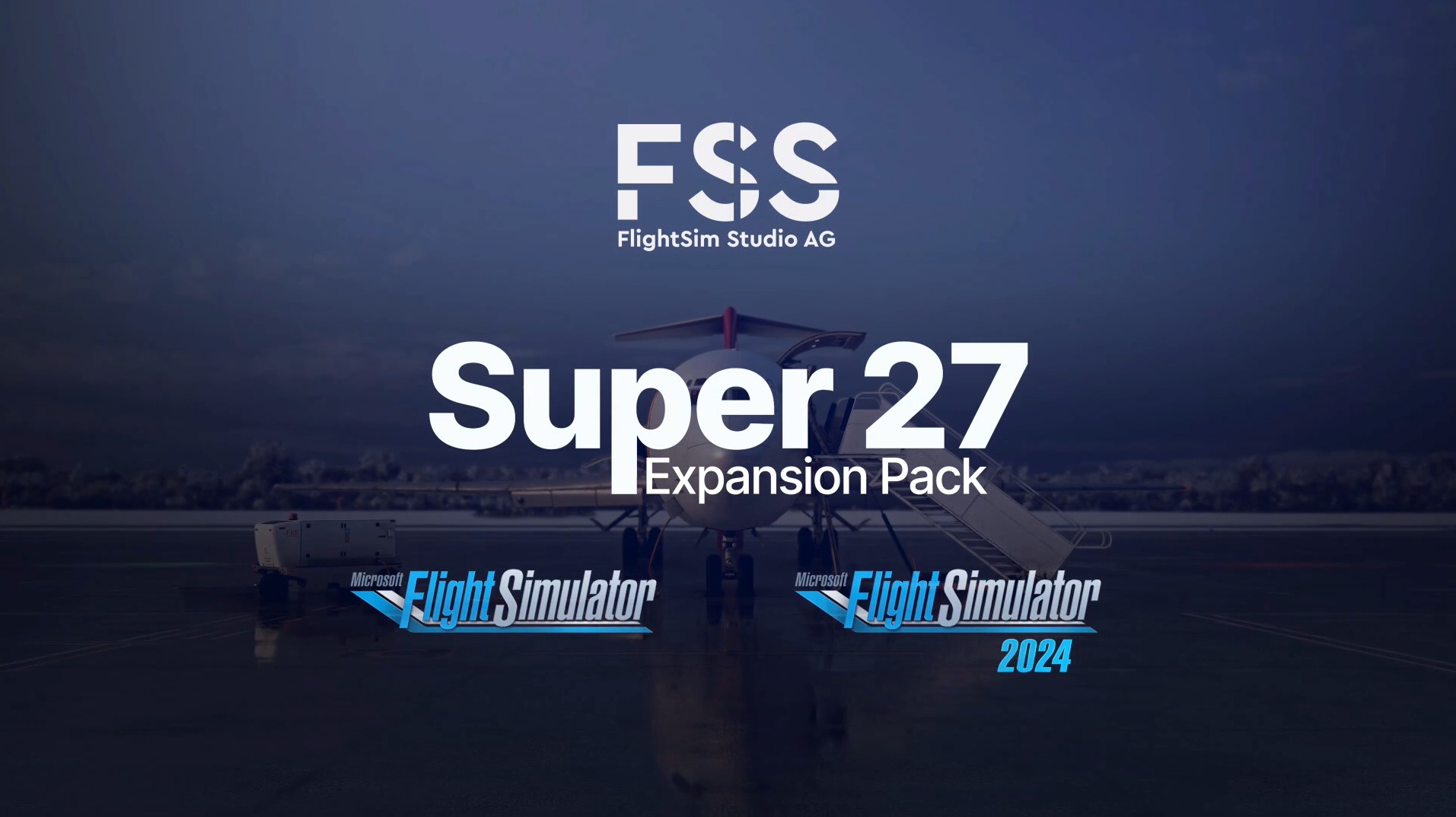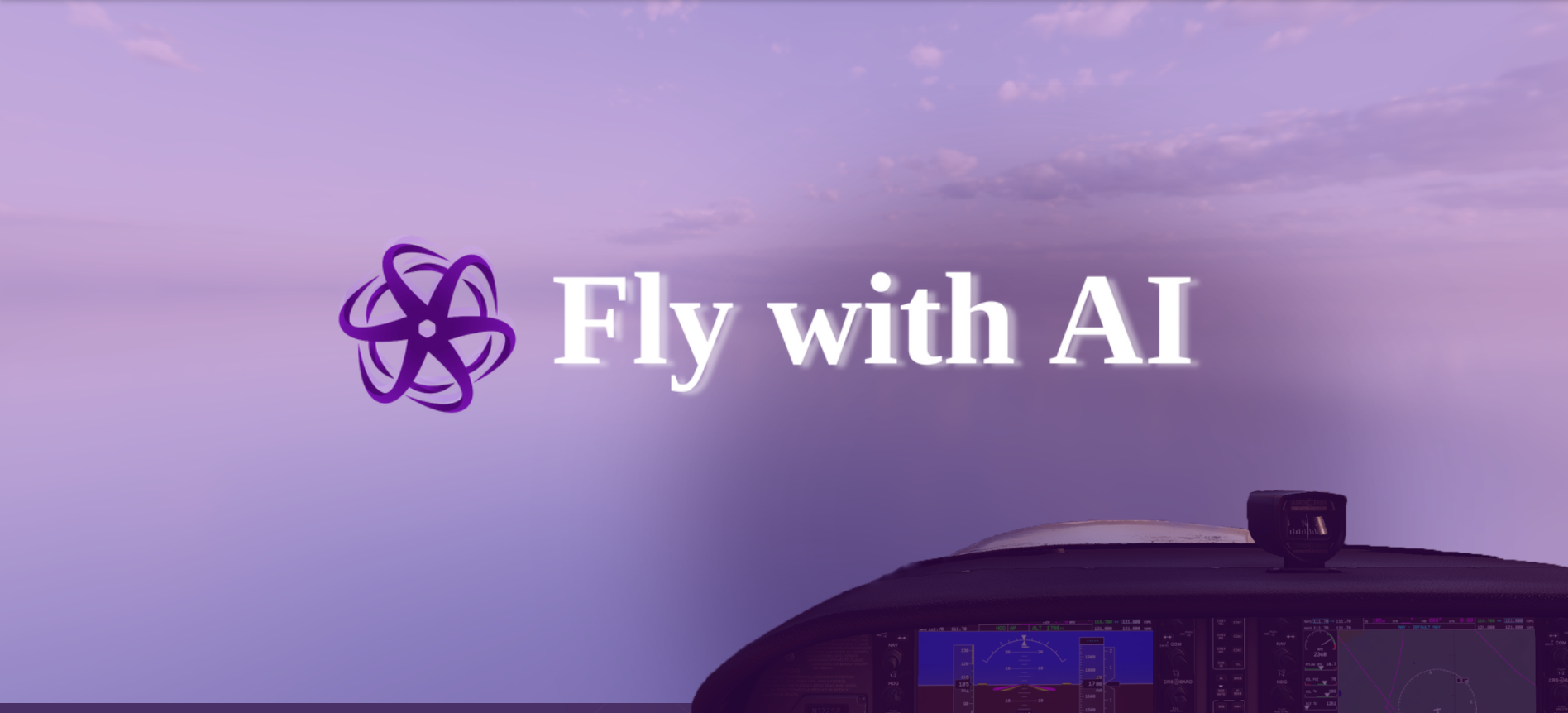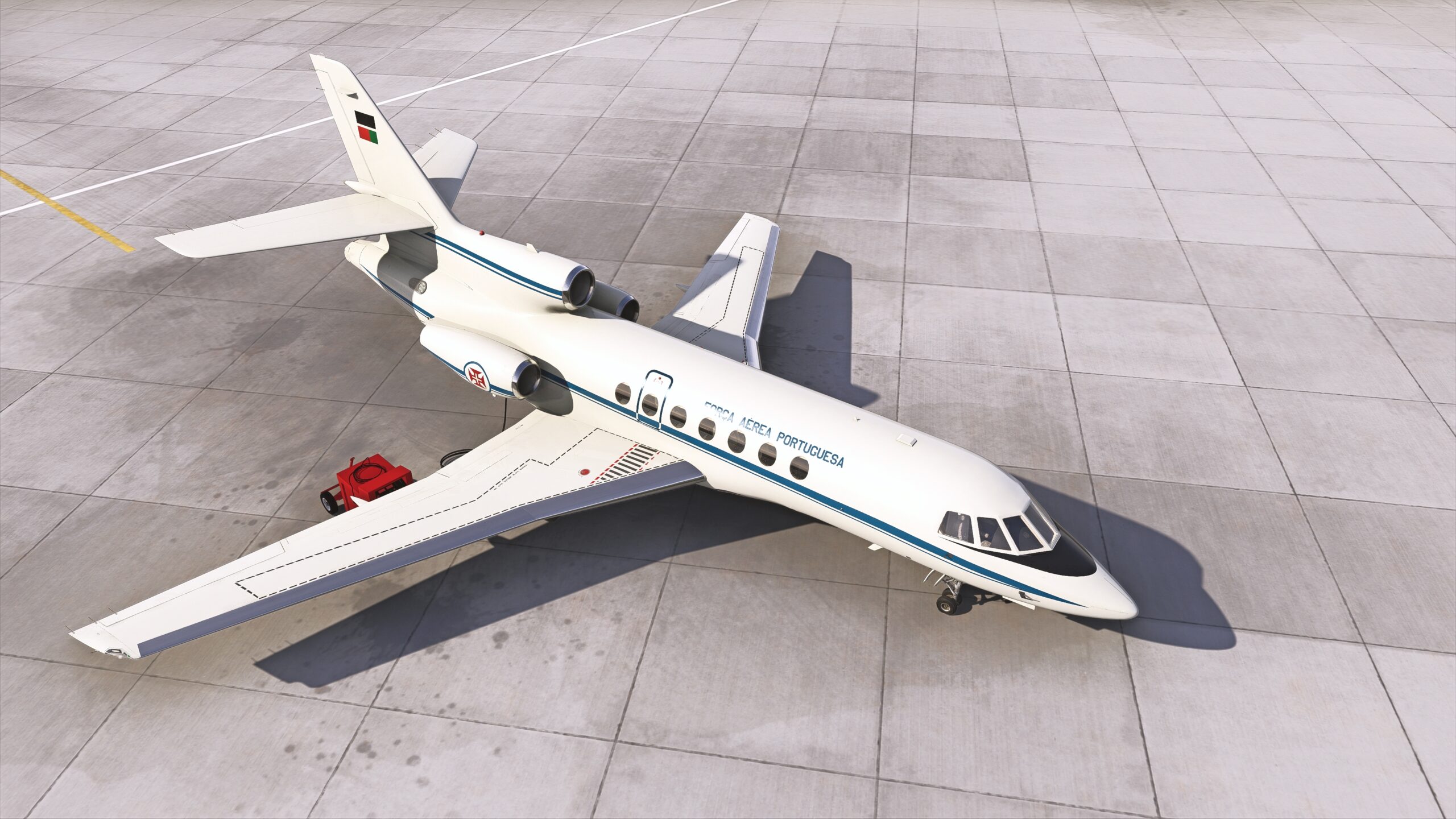Aamir from Fenix Simulations shared an extensive, almost fifty-minute-long video about their shortly-coming update for the Airbus A320 for Microsoft Flight Simulator. In addition to that, Aamir also made some of his opinions public on Flight Simulator Reddit.
Video Showcase of the A320 Block 2
Immediately from the start of the video, we notice that the aircraft received some new sounds, especially cabin announcements, that will be customisable through the EFB in the cockpit. Aamir mentions that this “PA System” is quite extensive and the volume is affected in the cabin depending on how far or close you are to a speaker. The volume can be changed, and the PA announcements will also be affected by electrical systems, and changing the power source will cut it down for a second.
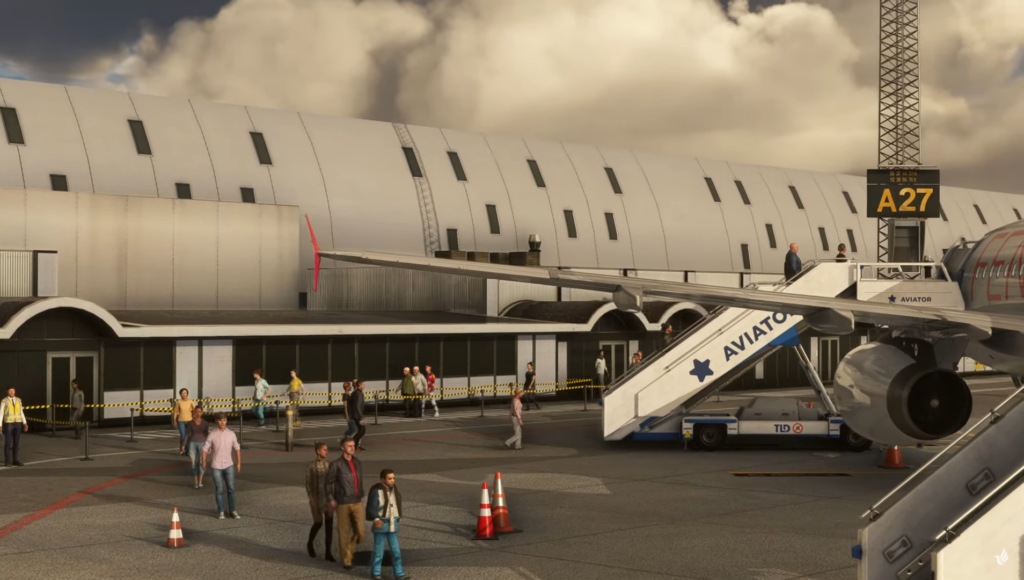

In the cockpit, the cockpit door will now affect the sounds of the cabin. When closed, the sounds will be muffled and quiet and very pronounced when opened. Lastly, the soundpack is fully customisable, and selectable on a livery basis and you can
GSX Integration
In the second part of the video, Aamir spoke about a new, full GSX integration. GSX will take commands from the EFB and everything will be as accurate as possible. This includes boarding and refuelling and there are also various options, depending on various airline operations.
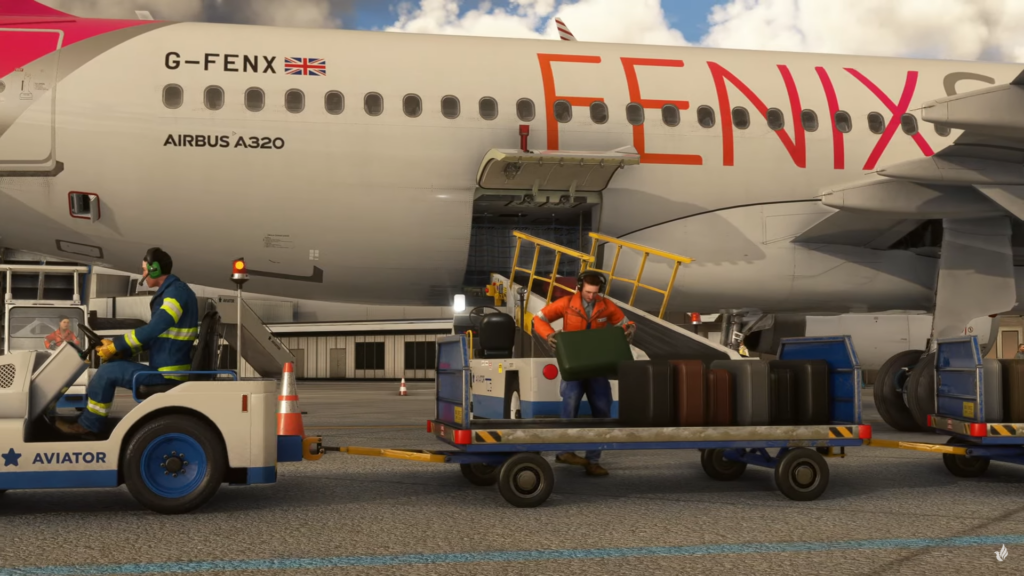
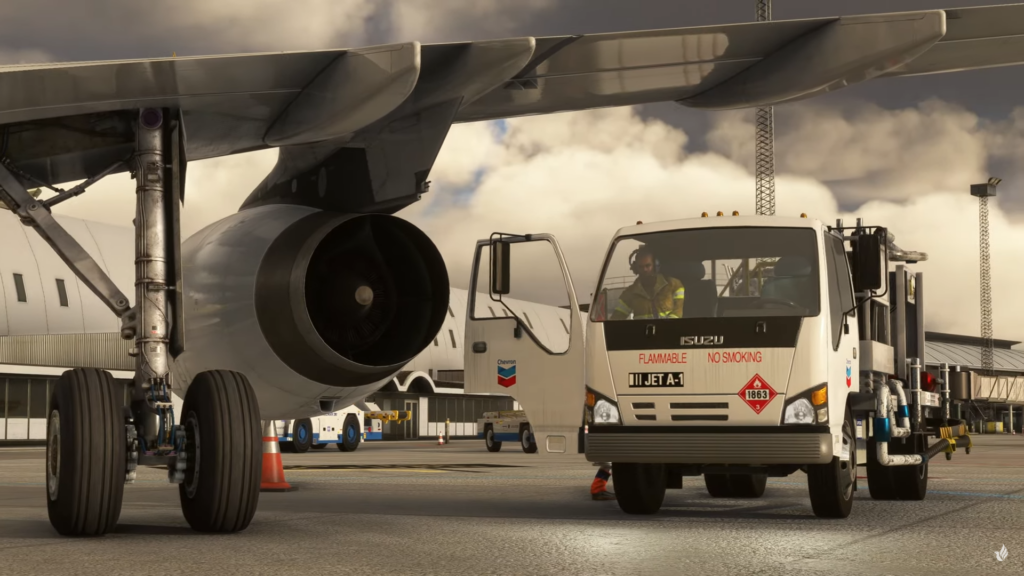
There will also be automatic pushback, and when you set the parking brake and turn on the beacon light, the GPU will be disconnected automatically and a pushback tug will be called.
EFB Improvements
The EFB version 2 is according to Aamir brand new, rebuilt from ground-up. Whilst the user interface still looks the same, from the video we can see that it is more snappier and faster in response to user input. There is also a new application called “Failures”. The name is self-explanatory, and you will be able to customise failures within various aircraft systems.
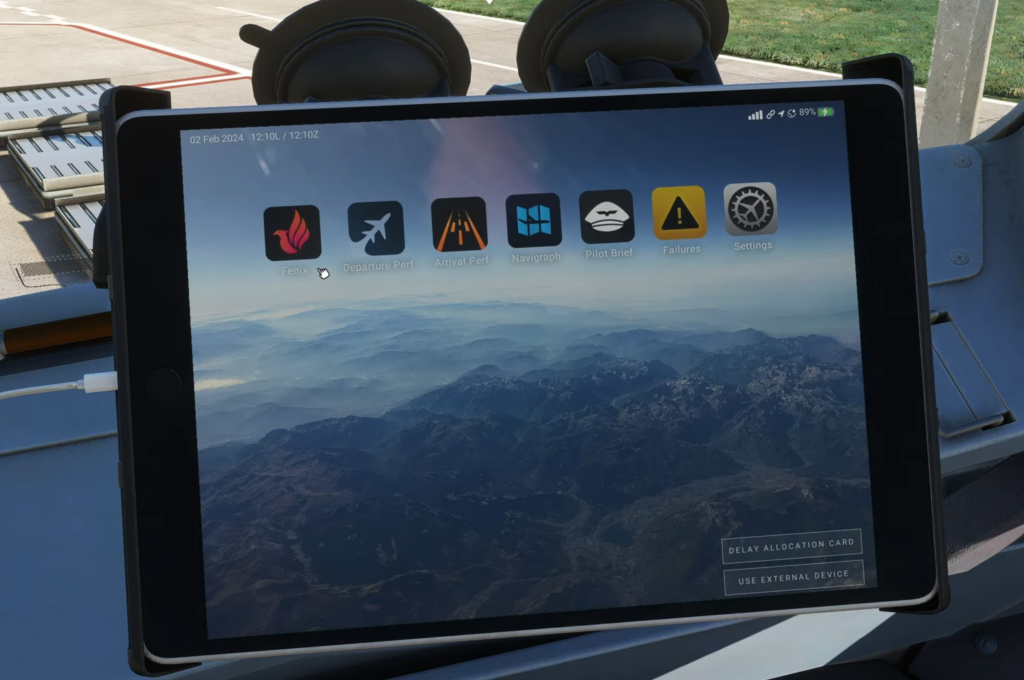
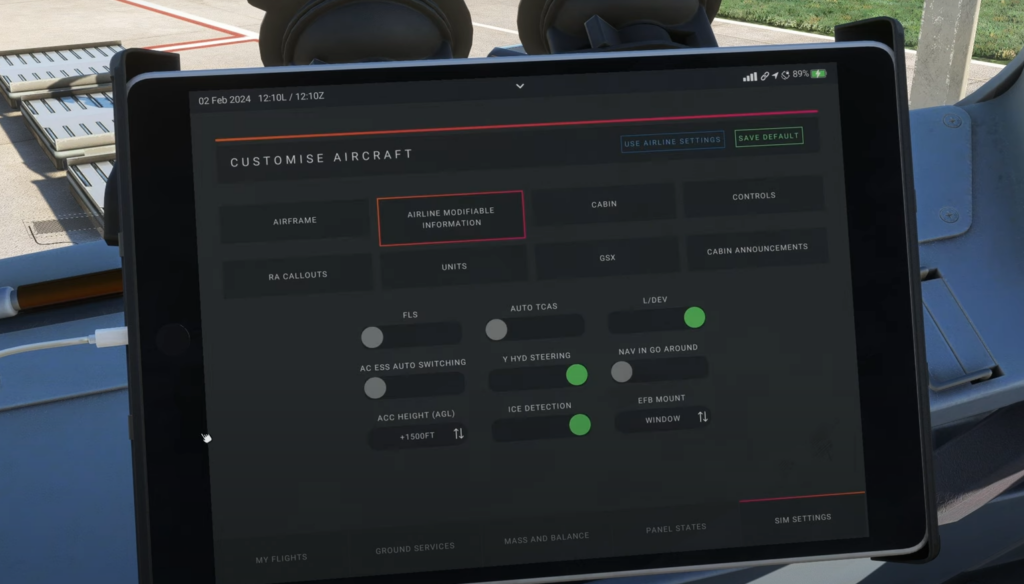
Another new functionality is changing the background of the EFB, and you can upload practically any image you like. It will now also support sending calculated data straight to the MCDU, this includes V-speeds, weights, centre of gravity and all the crucial information for flight.
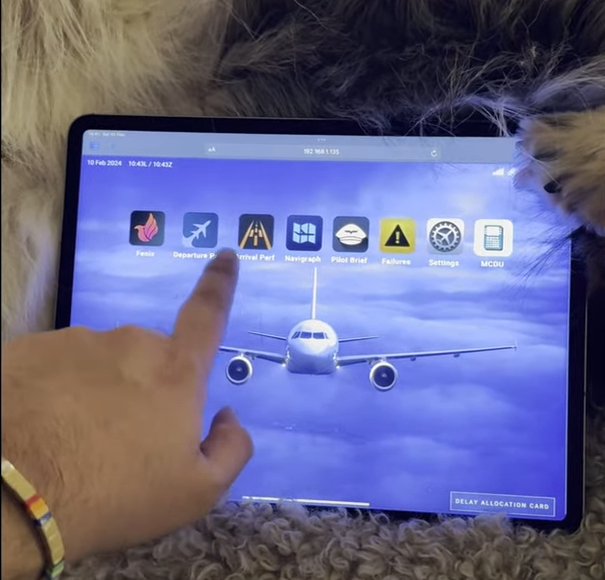

The EFB is now also optimised for more screen resolutions if you use an external device for it. For those who use the EFB in the aircraft itself, it is now possible to use physical keyboard input to type in data to the EFB, as this was a highly requested feature. The tablet will also include accurate airport data from Navigraph by default. Speaking of Navigraph, the Navigraph app was also updated, with new ANDB charts and better resolution for the best possible experience.
Flight Model Improvements and SDS
A new system, called SDS, or Sidestick Damping Simulation will make its debut in the A320 Block 2 Update. It includes reactivity and damping simulation to emulate the dynamics of real sidestick and translate these to real hardware. It is very difficult to simulate real sidestick behaviour on home flight controls, but this simulation will bring it a little bit closer to reality. This will be turned off by default, as this simulation might have a significant influence on various, less-used joysticks in the industry. This will make the immersion of flying the A320 much smoother.
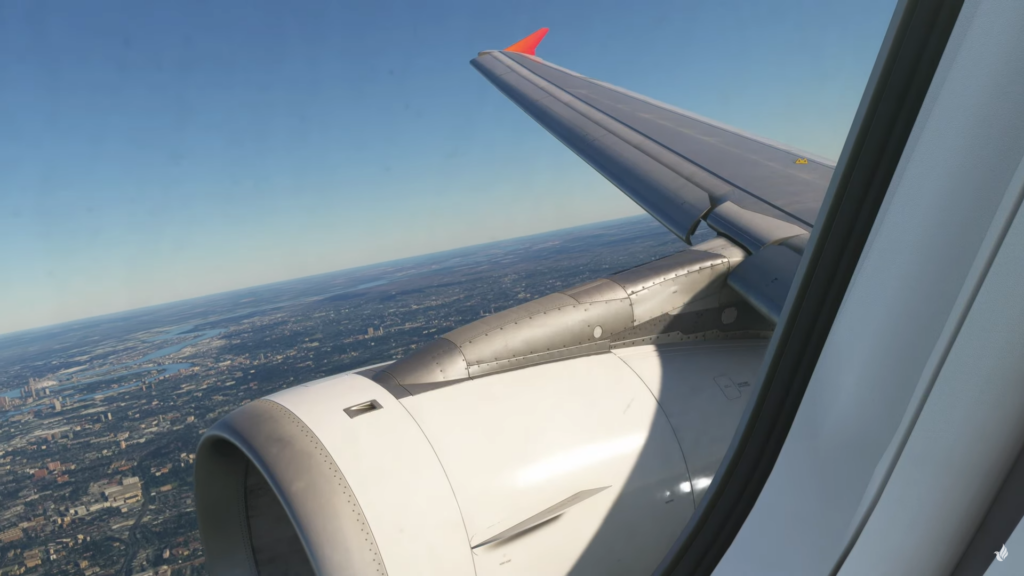

The flight model received a lot of changes in this update. The Fenix Simulations team created tools that took live telemetry data from the aircraft and tried to tweak it as close to reality as possible. These data included N1 pitch, drag and much much more. This was especially helpful for VNAV tuning. From now on, the A320 will be more accurate on descends for this exact reason.
The Fenix Simulations team also improved the flap 3 and 4 configurations on the Airbus A320, as the previous versions of the add-on had issues with pitch on these landing configurations. The upcoming update will bring a much more accurate depiction of these configurations.
External Engine Model
This whole update is not only bringing the IAE engines to the Airbus A320 by Fenix Simulations, but these model improvements will also influence CFM engines and possible future variations of both aircraft and engines. There was no documentation for the models, and the development team basically had to guess the parameters themselves.
Whilst the external engine model was significantly improved, it should not cause any performance issues. Aamir mentioned that they are at the end of the development of the engine improvements.
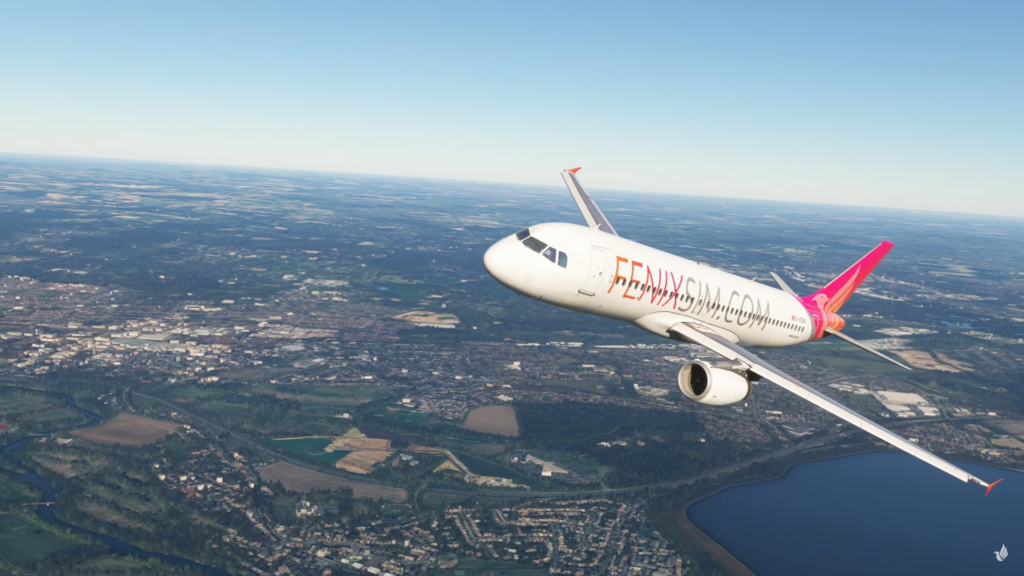

Speaking of immersive details, there is literally oil flowing through the engines with accurate values, temperatures and so on, all of which influence the behaviour of the aircraft. You can also compare oil usage between different engine speeds and flight phases. This was compared to real aircraft as well, and Aamir says that the Fenix A320 will simulate this with surprisingly close values.
The engines will also respond to the surroundings as well and even when being mishandled. Thus, you need to familiarize yourself with all the safety procedures of handling either CFM-56 or IAE V2500. For example, you can damage the engine by letting the compressor stall repeatedly without cutting the power. This will lead to the engine bursting into flames.
FADEC Demo and Forced Manual Start
Under harsher temperature conditions, the IAE engine might be influenced by FADEC, resulting in a longer crank period and an attempt to cool the engine down after it is started up. When N1 and N2 start rotating, they will begin driving compressed and core-heated air back towards the EGT probe, effectively displacing warm air back and out of the engine, with cold fresh air coming in from the front. This will result in an EGT spike, that will cool down gradually. This will be all simulated in the upcoming version of the A320.
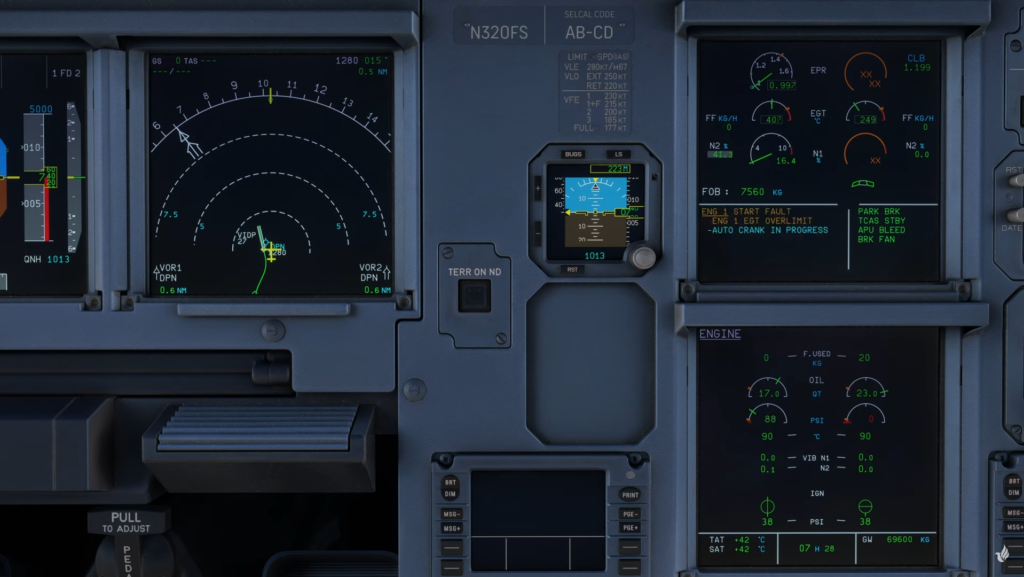
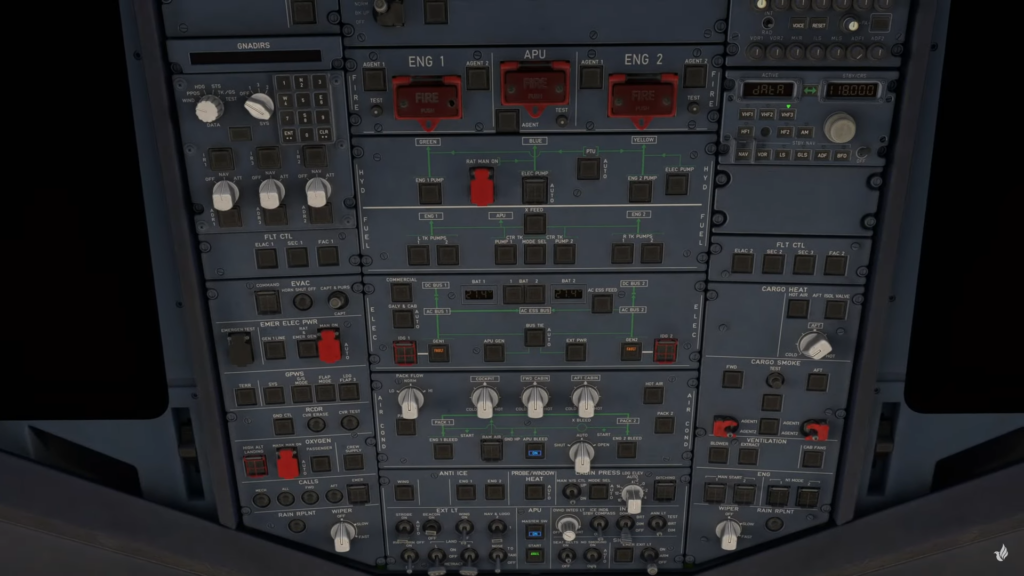
The IAE engine has a lower temperature limit that has an influence on startup under high outside air temperatures. Thus, a manual start needs to be applied during such conditions. Faulty autostart may or may not occur, but it is a certainty under fast turnaround times and high temperatures. In real life, engines vary from one to another, and Fenix tried to achieve the same with their A320 add-on.
Fan Blade Icing Demonstration
During cold days, a phenomenon of blade icing may occur on the A320 engines. Fenix Simulations modelled the ice accumulation on the fan blades but also on the cowling, which can cause vibrations. This will result in a lazy engine and a loss of power. This phenomenon mainly occurs around 0 degrees Celsius with freezing fog, freezing rain and other wet and cold conditions. Dry and deep cold will not affect the engine performance negatively in such a manner.

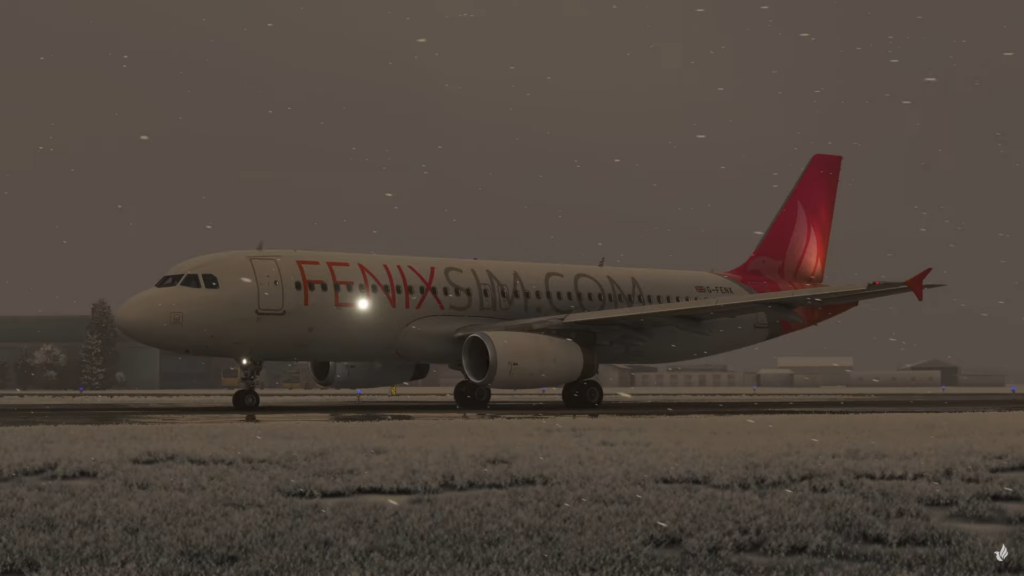
The ice builds up on LPC blades, inlet guide veins and outlet guide veins, resulting in reduced airflow in the engine which may become choked, resulting in inadequate thrust production.
Icing will only occur on low power modes, such as idling or during taxi and engines being powered down. During engines are powered down, you can call a new ground service from the EFB, called “fan blade heating”. It has no visual model yet, but it works.
Compressor Stall Demo
Aamir also showcased a compressor stall on engine 1 in a strong crosswind while attempting a takeoff. This problem is not very common unless you put the aircraft way beyond its limits. When the engine is not facing strong crosswind conditions, it experiences a so-called laminar flow, meaning that the air flows through the engine equally. Engines really do not like turbulent air, and that is going to cause a compressor stall in most cases if you haven’t damaged the engine prior.
Wrap-up of the Video
Aamir apologises for the delay in the update. However, they aim to bring the best A320 simulation possible. The delay was needed to make the A320 base really useful for the upcoming A319 and A321 expansions. The aircraft received a gut rebuild, with all the tiny details improved.
It also seems like there is another aeroplane coming from the Fenix team beyond the A320 line-up. This, however, was censored and we may only see in the future what is going to happen.
Aamir’s Post on Reddit
Aamir also spoke about the delays of Fenix Block 2 release via Reddit, clearing out many uncertainties in the community. According to him, the delays have nothing to do with the upcoming Microsoft Flight Simulator 2024.
The Fenix development team was recently being criticised for delivering nothing. However, it was all for the following reasons Aamir gave us in the post together with the lessons the team took from this smaller fiasco.
IAE was close to being done and they switched most of the work from IAE to CFM at the beginning of all of this. The new CFMs should have taken three or four months of development. At the time, releasing just IAEs made sense, but this changed soon.


The CFM development was at a good pace and the revised internal timeline showed around one to one and a half months of development time, with the IAEs expected to be released as announced. However, with the new CFM in development and IAE potentially being released, there would have to be support for two different infrastructures of the Fenix A320, literally translating to two aeroplanes in two different environments from the ground up.
Delaying the release of IAEs was considered and then later decided to do as such, with a much faster release of the whole new package of Fenix A320 aircraft, more reliable timelines and less potential for mixed aircraft infrastructures. However, the CFM engines were still not finished at this stage.
The biggest issues began when the art team was finishing the new CFM engines when the wider community ran into a certain Flight Simulator SDK error, meaning that any new exports were “utterly trashed”. From Asobo’s side, there was no documentation on it and there were a lot of silly SDK issues around the development already.


They figured out where the issue was sometime around the middle of October. The Fenix Simulations team opened a support ticket on Asobo support, which would result in an undefined period of waiting for a fix to come through. This resulted in Fenix needing to recreate their artwork of the engines from the ground up the second time, trying to avoid the SDK error as much as possible, leading the team to finish the engines by the beginning of January. Aamir then says that it could’ve gotten much worse, resulting in a sub-par quality update.
Whilst the decision to delay IAEs to include the new CFMs caused this situation in the first place, Fenix Simulations received “a punch in the face” from the simulator SDK, as they wanted to develop things faster, ultimately resulting in delays.
The Fenix A320 Block 2 update might be soon out. However, the developer didn’t give us any deadlines or a possible release date when this update will be available to the public. You can also read more about Fenix Simulations in one of our previous articles, where they showed some images of this upcoming update.
Feel free to join our Discord server to share your feedback on the article, screenshots from your flights or just chat with the rest of the team and the community. Click here to join the server.

